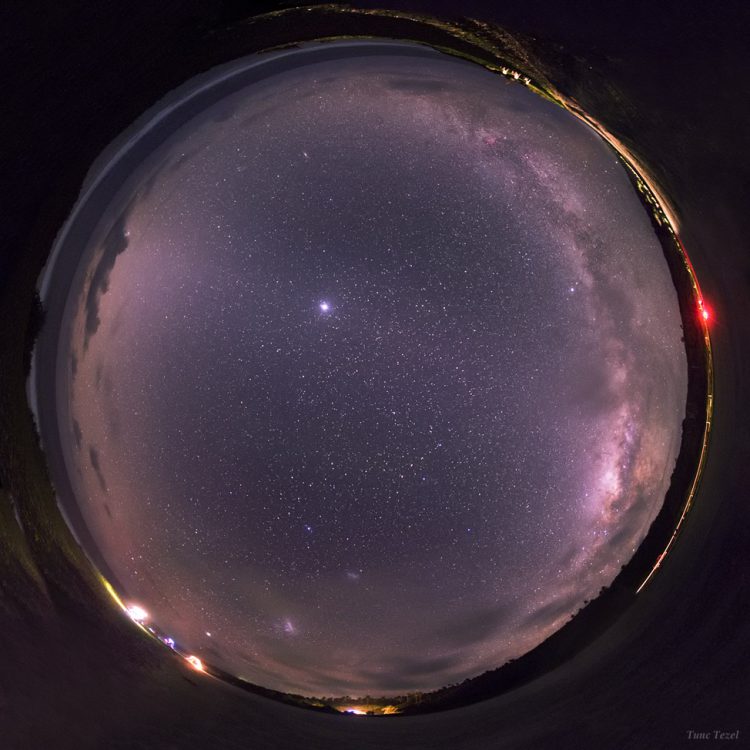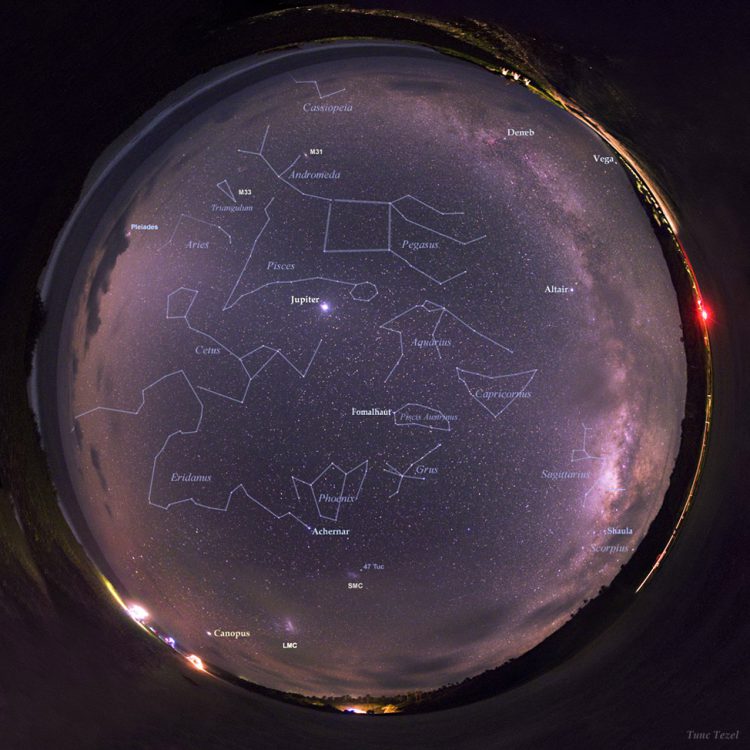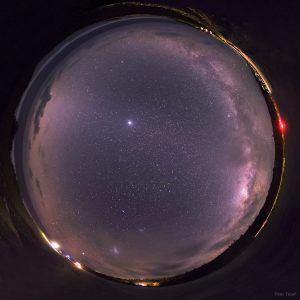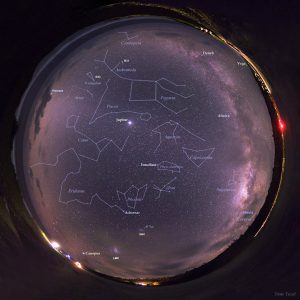The Bands of Zodiac and Milky Way
Description
This all sky image is made in early morning from a remote island in the Pacific Ocean. On the left the elongated glow of the zodiacal light (sunlight reflection from dust particles in the solar system plane) made all the way to overhead (where bright planet Jupiter is) and continued to the other horizon in form of faint zodiacal band. Pleiades star cluster is the little diffuse object just above the eastern horizon clouds at the bottom of the zodiacal light. On the right the band of the Milky Way has touched the horizon. The brightest region in the band of Milky Way is the galactic central bulge toward the constellations Sagittarius and Scorpius. Toward the south (bottom center) are two patchy objects known as the Large and Small Magellanic Clouds; two of the Milky Way’s satellite galaxies which are easily viewable by unaided-eye in a dark sky. They are considered among the symbols of the southern sky. Continue toward the horizon to find Canopus, the second brightest star in the night sky. This pacific paradise in the southern hemisphere is Mangaia, the most southerly of the Cook Islands. This volcanic remnant has the distinction of being the oldest island in the Pacific dating back to about 18 million years ago. As noted by the photographer: “I traveled to this 10 km wide island with only 500 Polynesian residents because the total solar eclipse path of 11 July 2010 was passing over this location. This image is made only 3 hours before the eclipse, with the sky clear and sharp. They were other eclipse chasers here in the Mangaia Airfield setting their equipment for the coming eclipse, unaware of what would happen. Most of the gathered people were denied a clear view of the eclipse by quickly forming clouds. Only a few people down the coast in Ivirua village were able to see the corona.” © Tunc Tezel




comments (0)